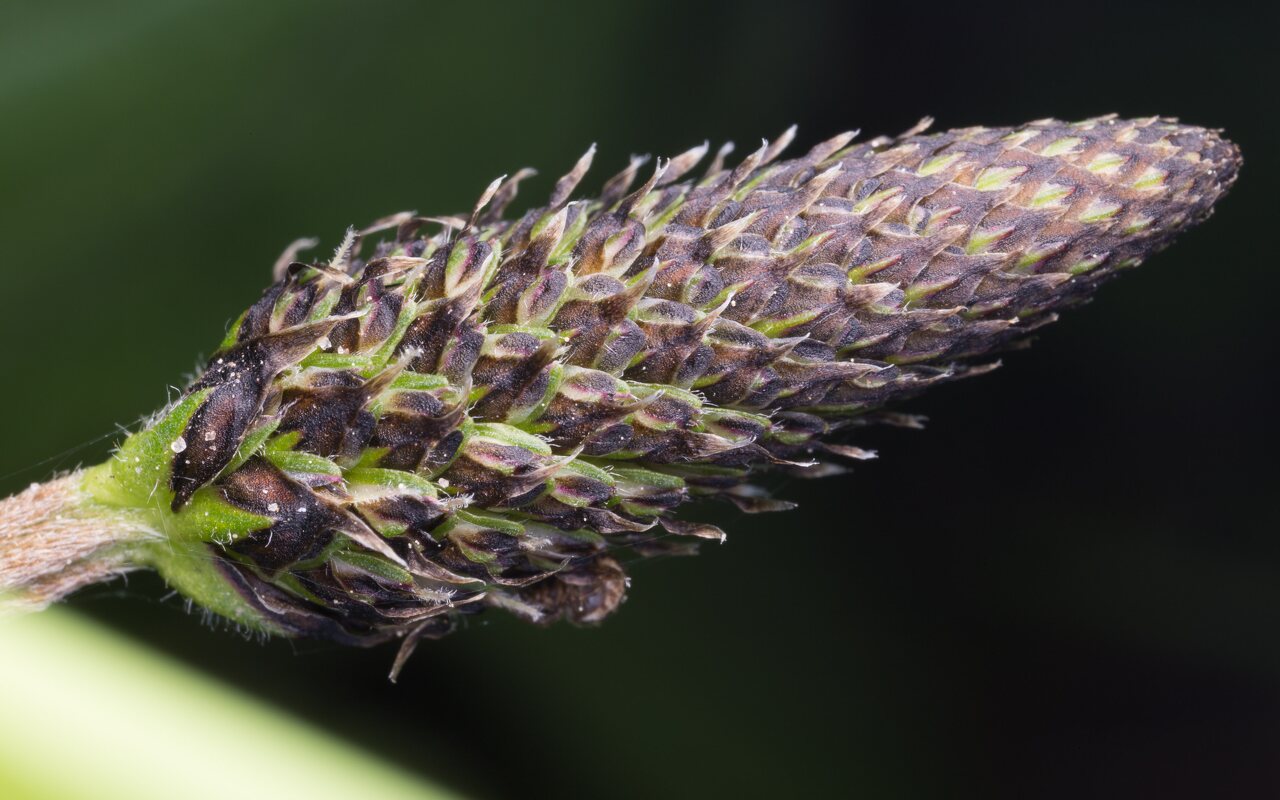
Plantago lanceolata · siauralapis gyslotis
- ribwort plantain, narrowleaf plantain, English plantain, ribleaf, lamb's tongue
- Spitzwegerich
- siauralapis gyslotis
- šaurlapu ceļteka
- babka lancetowata, babka wąskolistna, języczki polne
Plantago lanceolata is native to Eurasia, but has been introduced to North America and many other parts of the world with suitable habitats. Plantago lanceolata can live anywhere from very dry meadows to places similar to a rain forest, but it does best in open, disturbed areas. It is therefore common near roadsides where other plants cannot flourish; it grows tall if it can do so, but in frequently-mowed areas it adopts a flat growth habit instead. Historically, the plant has thrived in areas where ungulates graze and turn up the earth with their hooves.
The plant is a rosette-forming perennial herb, with leafless, silky, hairy flower stems (10–40 cm). The basal leaves are lanceolate spreading or erect, scarcely toothed with 3-5 strong parallel veins narrowed to a short petiole. The flower stalk is deeply furrowed, ending in an ovoid inflorescence of many small flowers each with a pointed bract. Each inflorescence can produce up to two hundred seeds. Flowers are 4 mm (calyx green, corolla brownish), 4 bent back lobes with brown midribs and long white stamens.
Daugiametis. Aukštis 10-15 cm. Žiedstiebis vagotas. Lapai siauri, lancetiški. Žiedynai trumpi. Dulkinės šviesiai geltonos. Sėklos iki 3 mm ilgio, pradeda bręsti liepos mėn. pradžioje. Žydi gegužės – rugsėjo mėn. Lietuvoje dažna rūšis. Auga ganyklose, sausose pievose, dykvietės, dirvonuose.
‥
0 comments
Add a comment